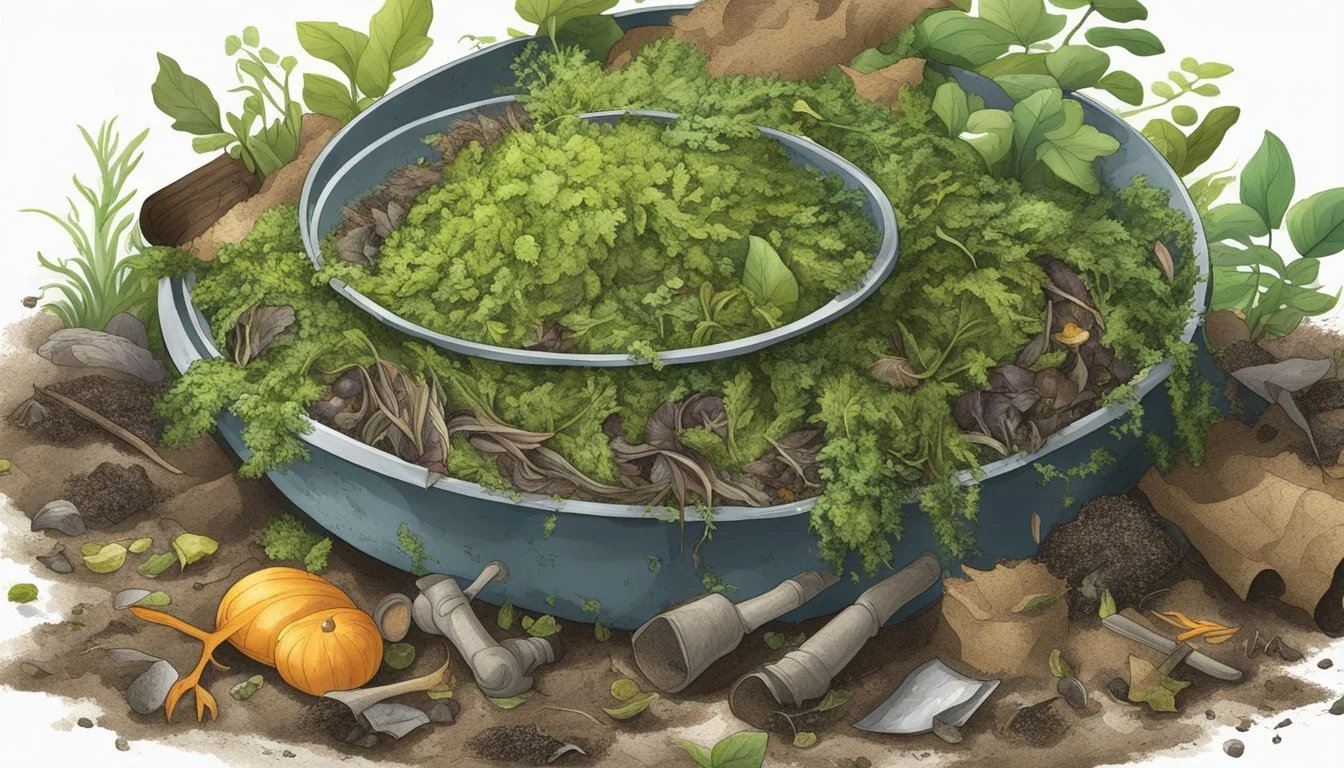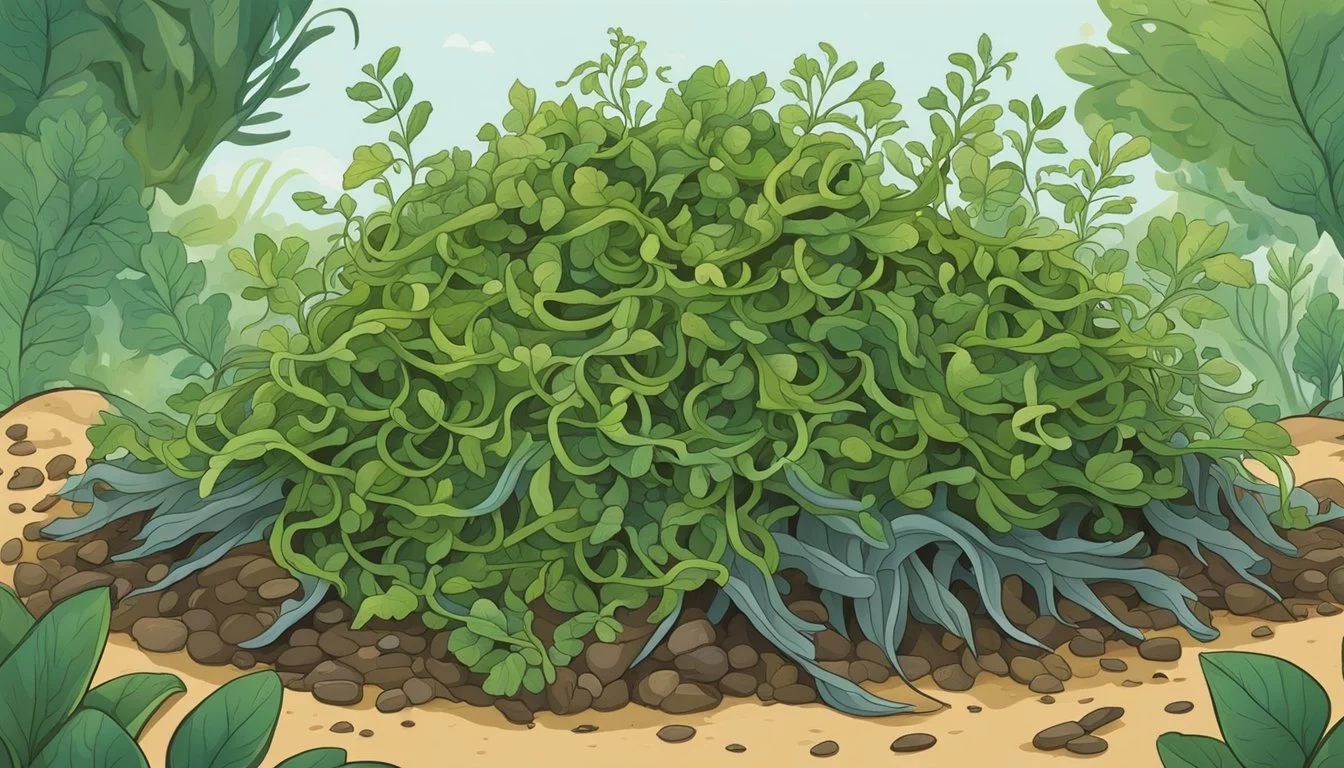Can You Compost Seaweed?
Unveiling the Benefits for Your Garden
Seaweed is frequently touted for its rich nutrient profile and has been used as a soil amendment for centuries, particularly in coastal areas. It is an organic material that replenishes the soil with essential minerals and trace elements. The practice of composting seaweed offers a sustainable way to enrich garden soils naturally and enhance plant growth.
In the composting process, seaweed acts as a 'green' material providing nitrogen, which is vital for the decomposition of 'brown' materials like leaves and twigs. This nutrient-rich addition to compost piles helps create a balanced compost that supports healthy soil ecosystems. Unlike other compost materials, seaweed decomposes fairly quickly, especially when shredded or chopped, which can substantially accelerate the composting process.
Moreover, it's important to note that while seaweed naturally contains salts from its marine environment, these salts are typically in small enough quantities not to disrupt the composting process or harm plant growth. The natural salts and any sand clinging to the seaweed can even add to the beneficial properties of the resulting compost. However, washing seaweed before adding it to the compost can help mitigate any concerns over excess salt.
Benefits of Seaweed in Compost
Seaweed has garnered attention in composting for its nutrient-rich content and soil enhancement capabilities. It serves as an excellent soil amendment, encouraging vigorous plant growth and sustainable gardening practices.
Nutrient-Rich Composition
Seaweed is densely packed with essential nutrients like nitrogen, phosphorus, and potassium, as well as over 60 trace elements. Its direct use as compost infuses the soil with these elements, providing a balanced fertilizer that promotes healthy plant development.
Soil Improvement
Incorporating seaweed into compost significantly impacts soil structure. It can enhance water retention in porous, sandy soils and contributes to better overall soil consistency. As a result, gardens benefit from improved root environment and nutrient uptake.
Promotes Microbial Activity
Seaweed compost is a boon to microorganisms vital for decomposition and soil health. Its addition to compost piles boosts microbial activity, accelerating the breakdown of organic matter and elevating the efficiency of the composting process.
Environmental Benefits
Using seaweed as compost is a sustainable practice that supports environmental wellness. It can help reduce garden and kitchen waste, minimizing landfill use. As a naturally occurring resource, seaweed composting promotes ecological balance and can protect the coastal ecosystem when harvested responsibly.
Collecting and Preparing Seaweed
Seaweed serves as a nutrient-rich addition to compost, benefiting soil with its trace elements and minerals. To effectively incorporate seaweed into a composting system, proper collection and preparation techniques are essential.
Harvesting Seaweed
Harvesting seaweed should only occur after acquiring the necessary permissions, as regional regulations might restrict taking seaweed from beaches. Ideal times for collection often follow storms, which can deposit ample seaweed onto the shore. Oceanside gardeners typically gather this resource by hand, ensuring sustainability by taking only what has been washed up and avoiding live seaweed directly from the ocean's vegetation.
Rinsing and Soaking
Once collected, it is advisable to rinse the seaweed to remove saltwater and clinging sand, which could be excessive for compost piles. Simple rinsing can be performed with fresh water. To further reduce salt content, a prolonged soak might be required. Typically, a soak of 20-30 minutes is sufficient, but some gardeners prefer to leave seaweed in fresh water overnight.
Preparation Techniques
After rinsing, gardeners have a choice for preparation:
Wet Seaweed: Can be added directly to the compost, acting as a nitrogen-rich "green" layer to balance "brown" elements like leaves.
Dry Seaweed: Acts similarly to other carbon-rich materials and should be layered in the compost accordingly. It can also be used as mulch or directly tilled into garden trenches to improve soil quality.
There's no need for gardeners to dry seaweed before introducing it into the compost pile—using it fresh is perfectly fine. Employing these methods helps to utilize the full potential of seaweed as an organic soil amendment.
Incorporating Seaweed into the Compost Heap
Incorporating seaweed into a compost heap enhances its nutrient profile while contributing to the necessary organic matter required for effective composting. The process involves thoughtful layering and mixing, managing the seaweed's salt content, and monitoring the compost for optimal conditions.
Layering and Mixing
When adding seaweed to the compost heap, it is important to layer it correctly with other organic materials. Start by shredding or chopping wet seaweed into 1- to 2-inch-long pieces to expedite decomposition. Layer the seaweed alternately with dry carbon-rich materials like dried leaves or straw. This mix ensures a balanced compost, as the seaweed provides nitrogen and the dry materials supply carbon.
Layering strategy: Aim for a ratio of green to brown materials, typically recommended at 1 part green (seaweed) to 3 parts brown (carbon-rich materials).
Controlling Salt Content
The salt content in seaweed can be a concern, but typically, the amount of salt brought in by seaweed is not harmful. If needed, seaweed can be rinsed in fresh water to remove excess salt and then incorporated into the heap. This dilution helps mitigate concerns regarding salt concentration which could potentially affect the balance of the compost.
Dilution method: Briefly soak seaweed in freshwater or rinse; either let it rain to naturally dilute the salt or manually rinse before composting.
Monitoring Compost Conditions
Continuous monitoring is vital to maintain a healthy compost process. The temperature of the heap should be monitored to ensure the material is actively composting, which also aids in breaking down the seaweed effectively. Odor can be a sign of an imbalance; a well-maintained heap should have a pleasant earthy smell, not a rotting odor. The compost should be turned regularly to provide oxygen and distribute moisture and temperature evenly throughout the heap.
Temperature checks: The compost should feel warm to the touch, indicating that decomposition is proceeding well.
Odor assessment: Any foul smells should be addressed by assessing moisture levels, aeration, and the balance of materials in the heap.
Utilizing Seaweed Compost in the Garden
When incorporating seaweed compost into the garden, one takes advantage of its nutrient-rich properties to enhance soil health and plant vigor. This compost serves as an excellent soil amendment, brings vital nutrients to young plants, and can be transformed into beneficial compost teas and extracts.
As a Soil Amendment
Seaweed compost significantly improves soil consistency by increasing water retention, especially in sandy or grainy soils. As a soil amendment, it is typically applied as a top or side dressing, depending on the garden's needs. The unique composition of seaweed introduces a diverse array of nutrients and microbial inoculants that promote a fertile and resilient soil ecosystem.
Feeding Young Plants
In the early stages of growth, young plants require an abundance of nutrients to establish a robust root system. Seaweed compost, with its high nutrient content, acts as an ideal fertiliser without the risk of chemical burn often associated with synthetic fertilizers. A reasonable dressing is 60-120g per square meter. When seasoned with NPK fertilizers, seaweed compost can remedy the initial nitrogen tie-up in the soil and support the vigorous growth of young plants.
Compost Teas and Extracts
The transformation of seaweed compost into liquid forms such as compost teas and extracts mobilizes its benefits. Liquid seaweed fertilizer, derived from compost tea or extract, provides a concentrated dose of nutrients and can act as both foliar feed and soil drench. This liquid application fosters a quick uptake of nutrients and helps establish a strong microbial presence in the soil, which in turn supports the plants' nutrient absorption and disease resistance.
Practical Tips and Common Questions
This section provides essential information on the best practices for composting seaweed, addressing potential pest concerns, and troubleshooting common problems encountered in the composting process.
Effective Seaweed Composting Guidelines
Composting seaweed is a process that enriches the soil with vital nutrients. To start:
Rinse: Seaweed should be rinsed to remove excess salt, although a small amount of salt can be beneficial.
Chop: Cut the seaweed into smaller pieces to accelerate decomposition.
Layer: In a compost bin, alternate layers of seaweed with "brown" materials like dry leaves to balance nitrogen-rich seaweed.
Moisten: Ensure the pile is moist but not overly wet.
Seaweed composting is suitable for both traditional compost piles and designated compost bins.
Addressing Pest Concerns
Seaweed is generally not a significant attractor of pests and can actually help deter pests, contributing to pest control in the compost. Here are some tips to keep the compost pest-free:
Cover: Always cover new additions of seaweed with a layer of brown material.
Maintain: Turn the compost regularly to disrupt any pests that may have settled.
Control moisture: Avoid an overly wet compost environment, which can attract pests.
Incorporating seaweed can also help prevent fungal issues and protect against certain viruses that could otherwise thrive in compost.
Troubleshooting and Solutions
When problems arise, they can often be solved with a few adjustments:
Odor: If the compost smells, it may be too wet or lack oxygen. Turn it to introduce air and add more "brown" materials.
Slow decomposition: A shortage of nitrogen or warmth could be the cause. Seaweed adds nitrogen, but ensure there is also sufficient heat in the pile.
Pests: If pests become a problem, reassess the moisture levels and make sure the seaweed is well mixed with other materials.
Seaweed composting can have occasional challenges, but these common problems are often easily managed with the right guidelines and a bit of persistence.
Environmental Considerations and Sustainability
Composting seaweed can contribute positively to environmental sustainability, particularly in waste reduction and soil health. The careful utilization of seaweed as compost must consider ecosystem balance and sustainable harvesting methods.
Impact on Local Ecosystems
Seaweed plays a significant role in coastal ecosystems. It provides habitat for marine life and contributes to the stabilization of underwater environments. Composting seaweed can reduce waste on beaches, potentially benefiting both flora and fauna. However, the removal of seaweed must be done with care to prevent unintended consequences on marine ecosystems. Unsustainable removal can lead to habitat loss, which can affect local fauna and the overall health of the coastal environment.
Ethical Harvesting and Use
Sustainable practice in seaweed harvesting is crucial. Ethical harvesting means taking only what is necessary and only in regions where it will not negatively impact the environment. Utilizing seaweed that has washed ashore is a sustainable practice that can diminish the over-exploitation of this resource. By following these guidelines, seaweed composting can be a valuable and sustainable addition to agricultural practices.



